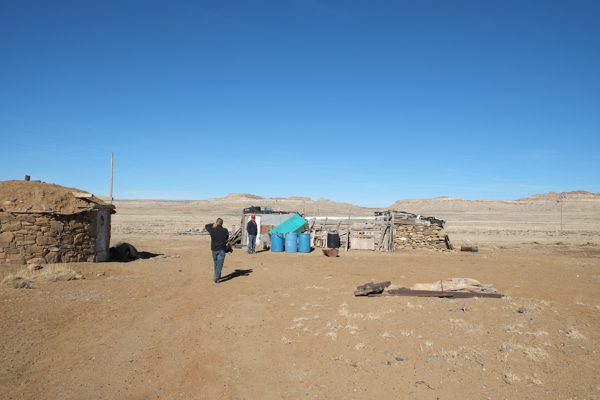Three years ago John Leeper, then head of the Navajo Nation Department of Water Resources, told me about the importance of the deal that assigns long-neglected water rights along with the money to bring the water to arid eastern side of the reservation: “Real water to real people in real time.” Last week Roberto Rosales and I went out to Whitehorse Lake for an update:
The buckets are for the relatively short drive to the Whitehorse Lake chapter house, where they’re filled with safely drinkable water. For a dollar, community members can take a shower there, too. It’s a longer drive to one of the windmill-fed stock tanks to fill the 50-gallon barrels Smith uses to haul water for his family’s six goats and the two trees outside the house. “We haul it daily,” Smith said.
The network of blue stakes leading outward from the big new water tank at the foot of the mesa is a signal of change. In November 2012, 24 Whitehorse Lake homes were connected to the newly arriving water lines. Last month, the home Smith shares with his 87-year-old father, Chee Smith Sr., was among the next 21 homes to be connected, with the final plumbing now underway to connect the indoor plumbing to the water lines and newly dug septic systems carved into the hard desert earth behind each house.
“Once they hook up, they don’t have to haul any more,” the younger Smith said.

